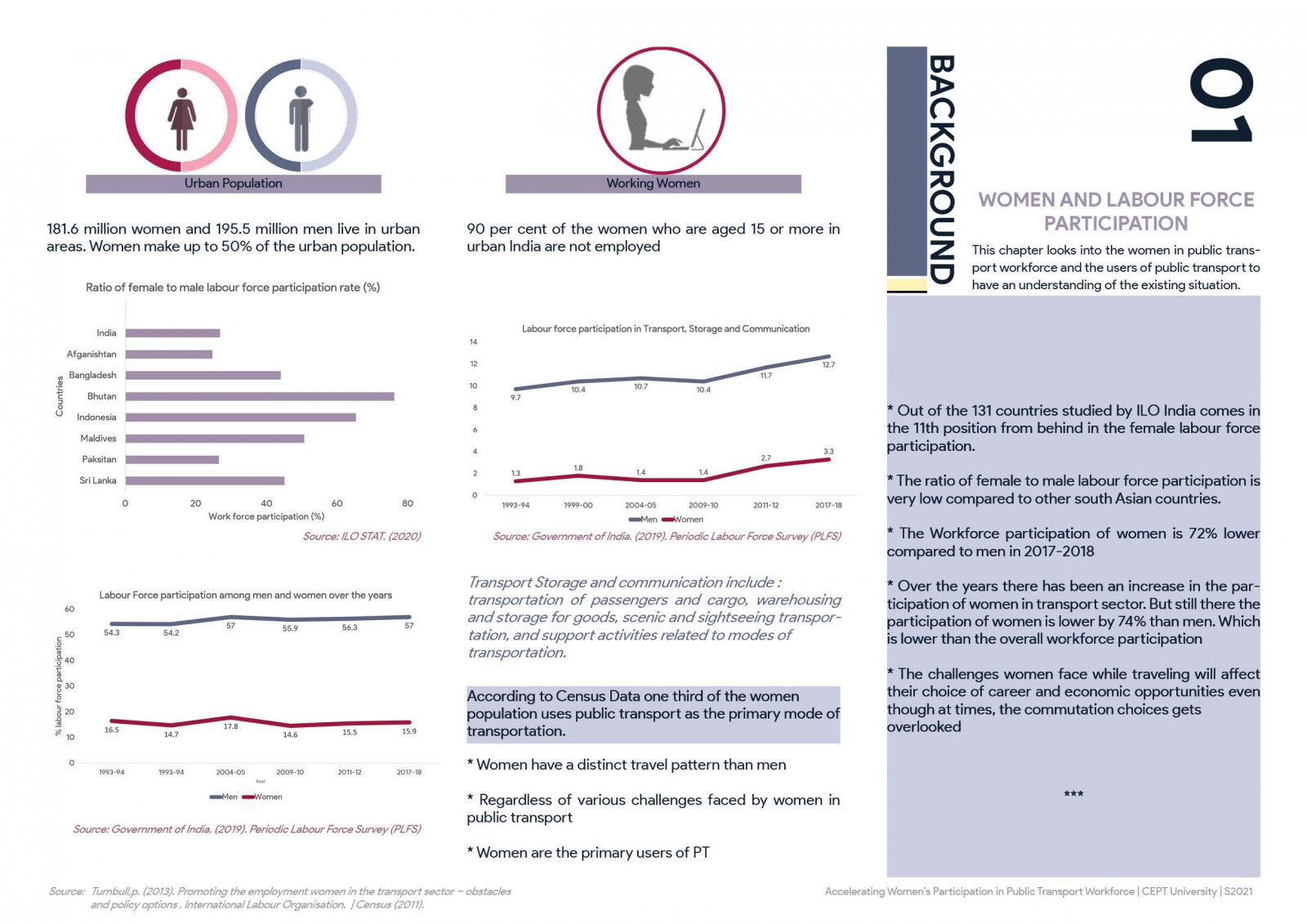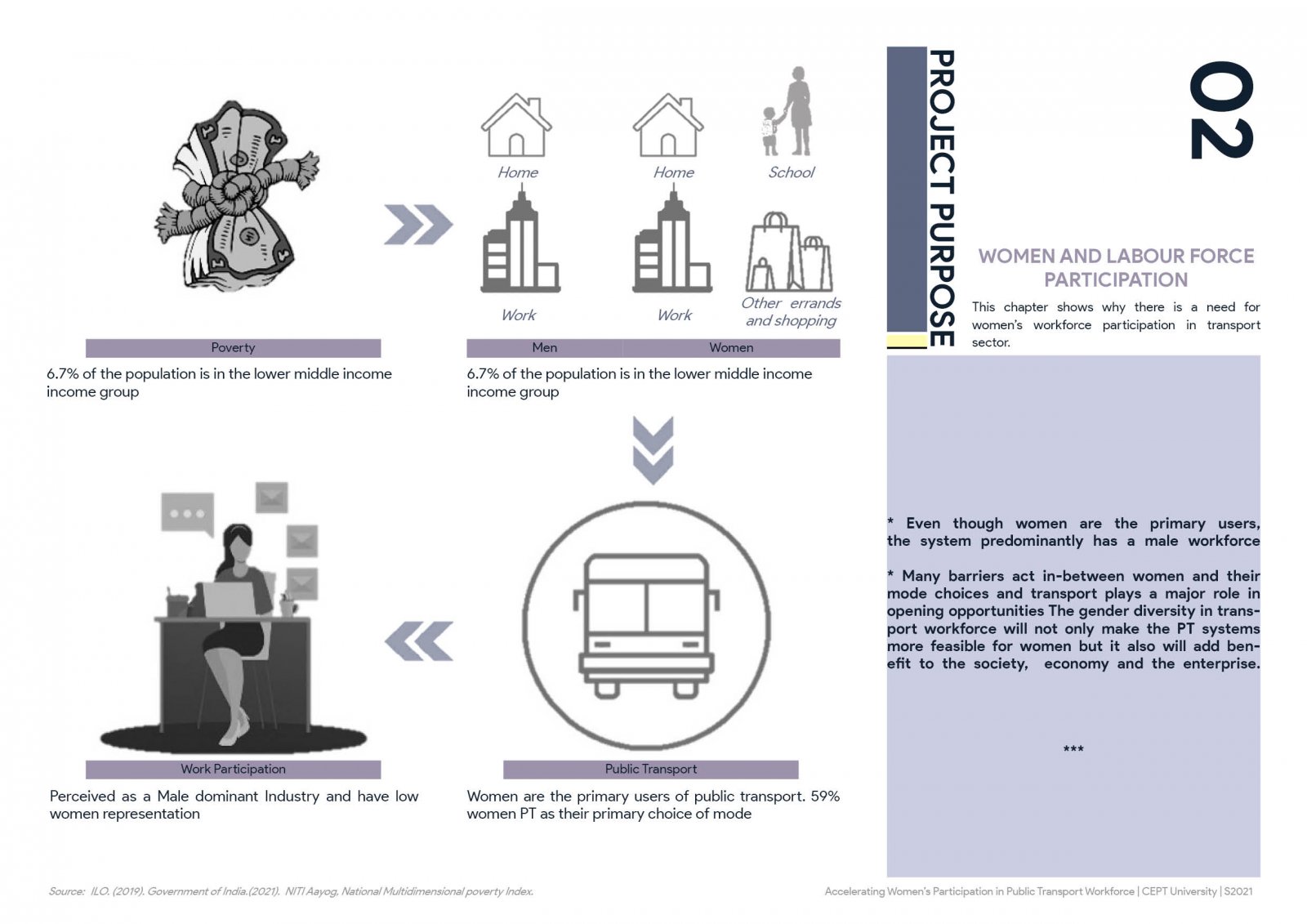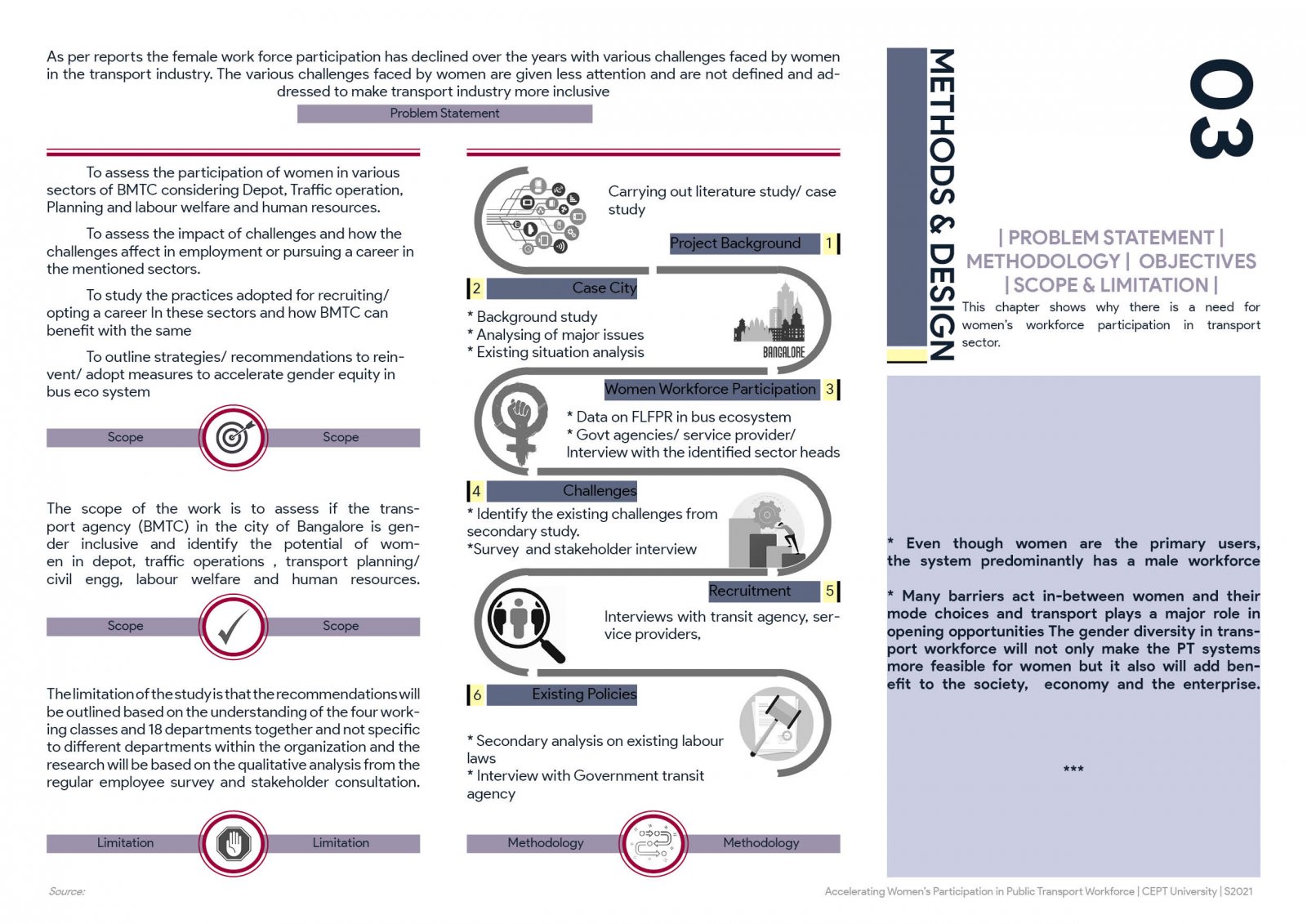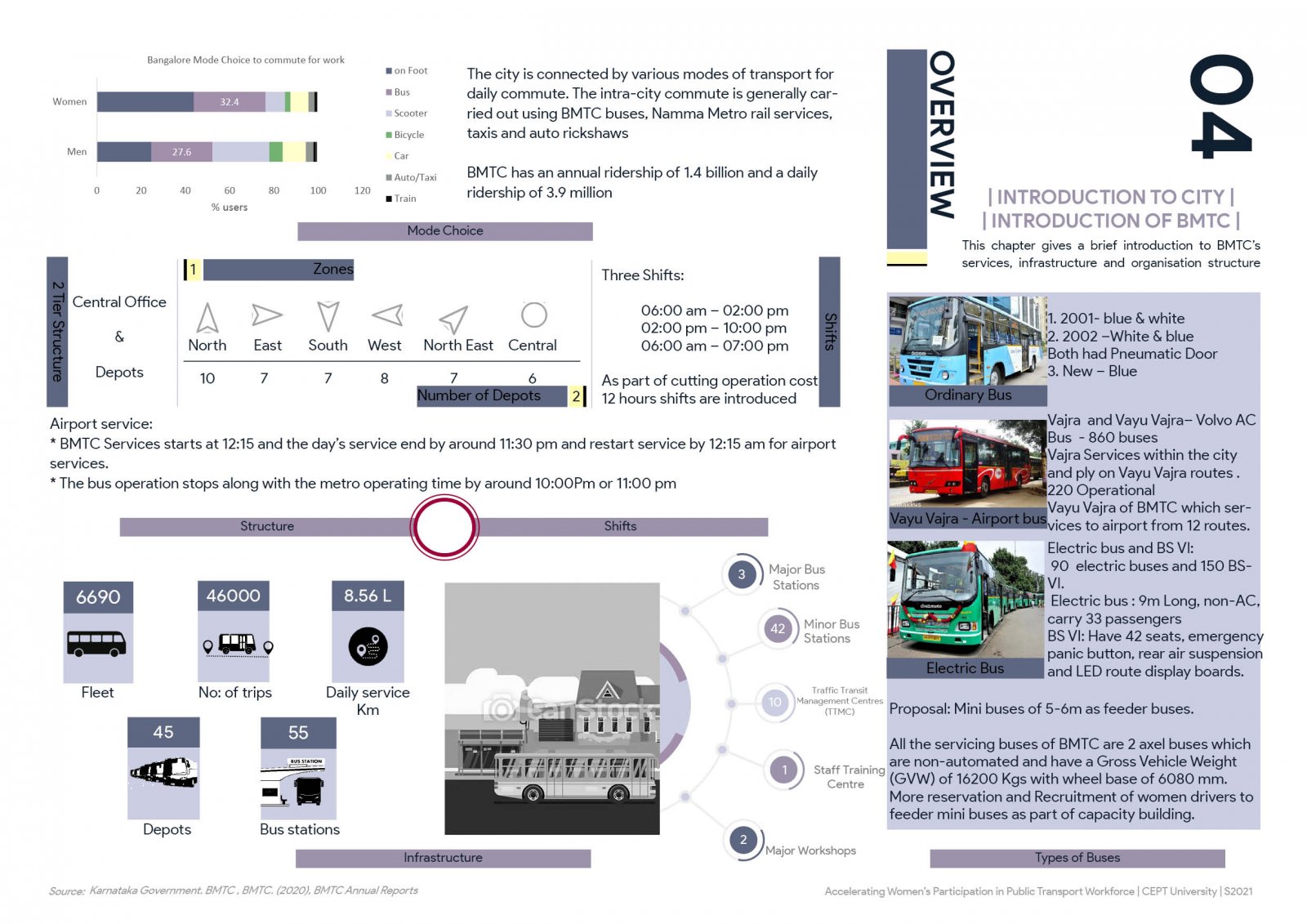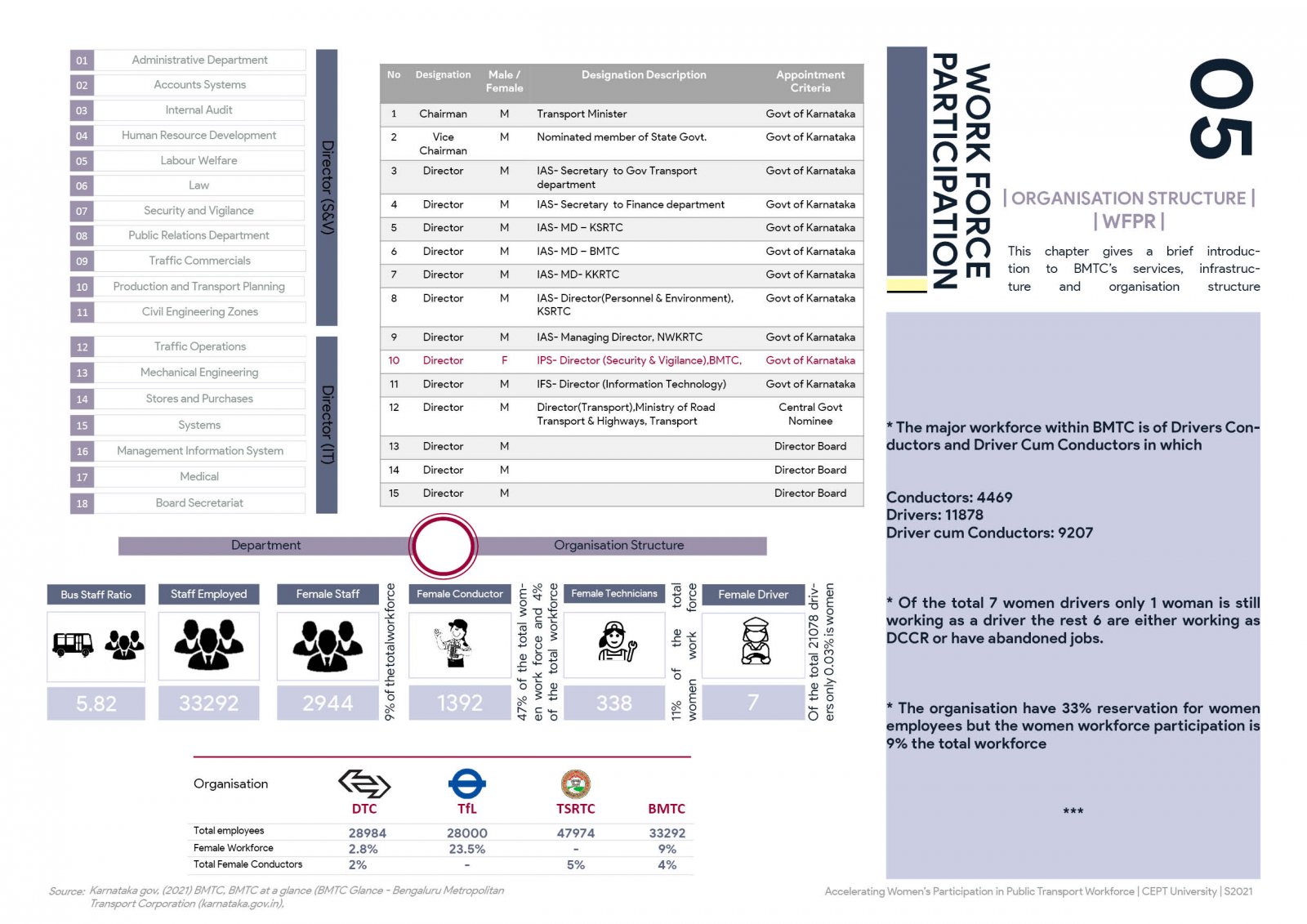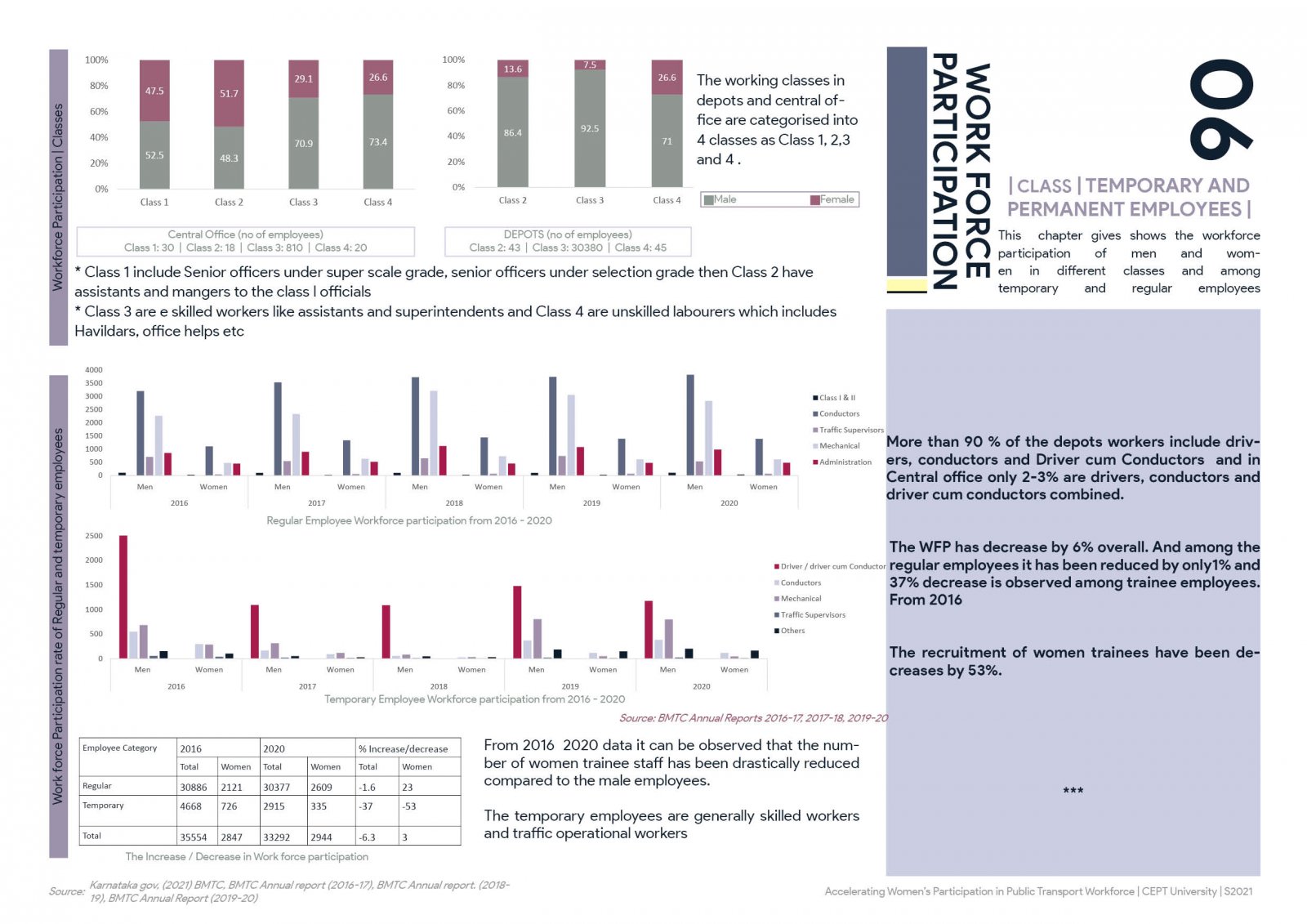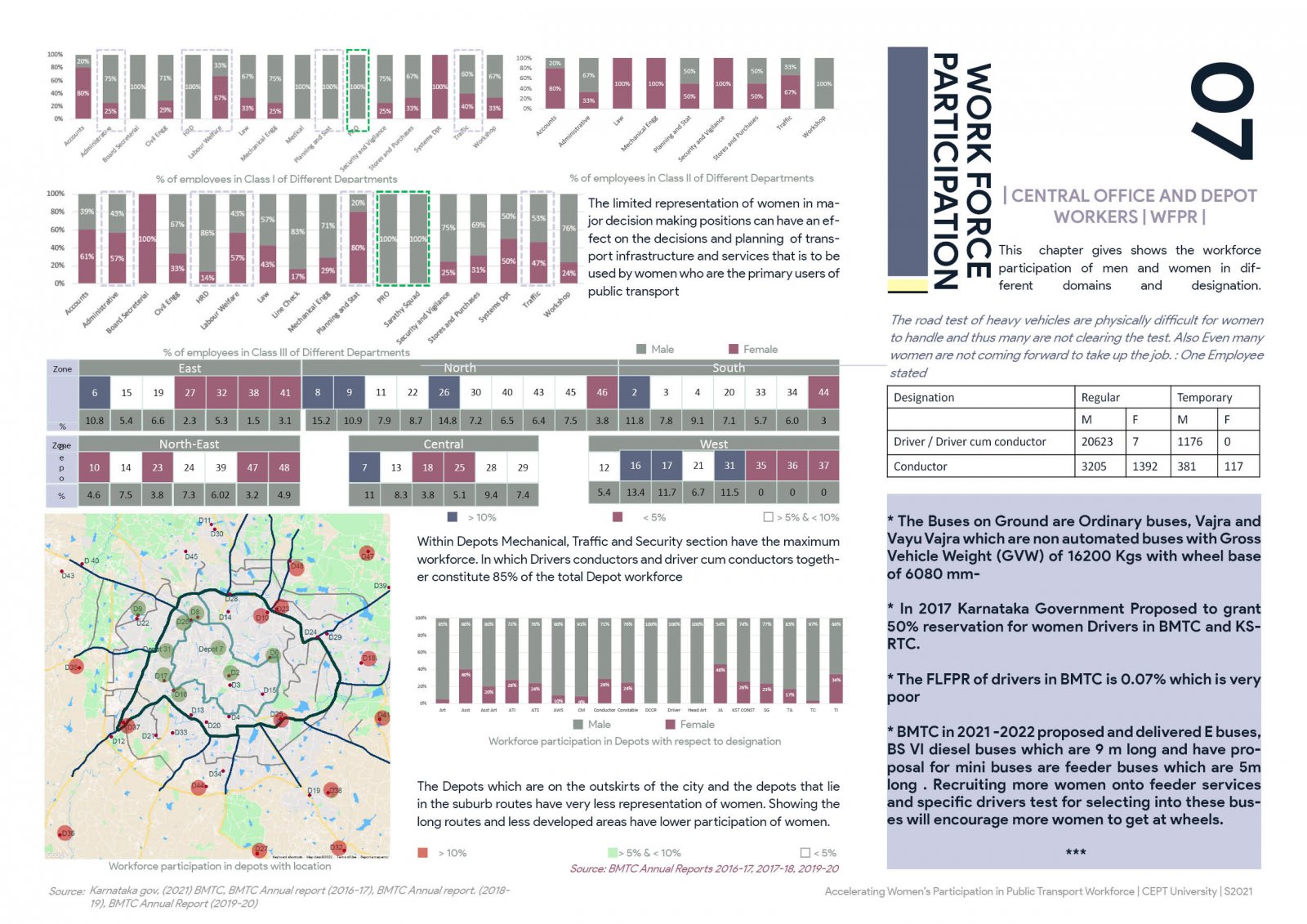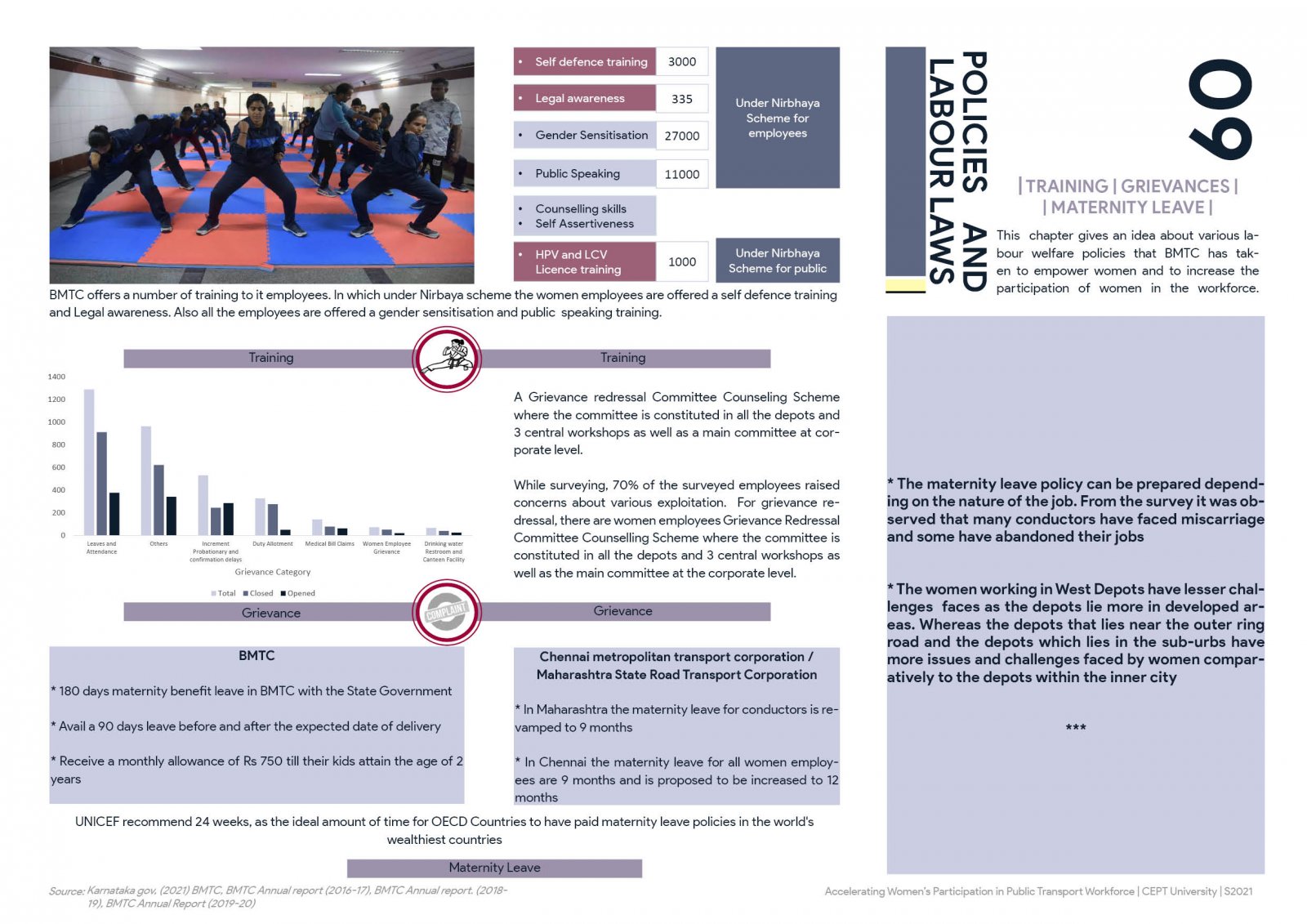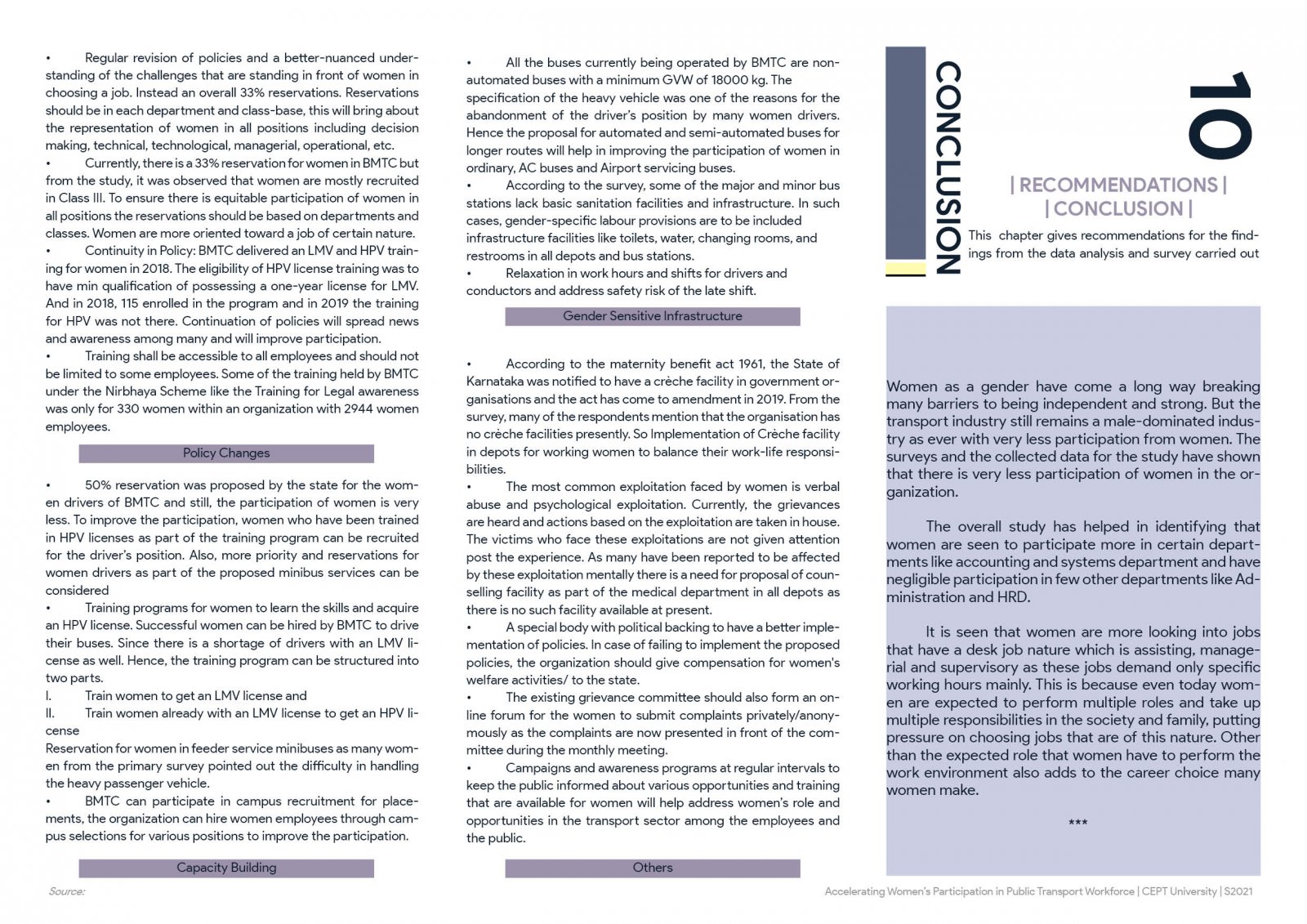Your browser is out-of-date!
For a richer surfing experience on our website, please update your browser. Update my browser now!
For a richer surfing experience on our website, please update your browser. Update my browser now!
Women make up 50% of the urban population but the total workforce participation of women in urban India stands at 28% (ILO, 2020). The ratio of female to male labour force participation in India is 26.7%, which is fairly lower compared to neighbouring counties like Sri Lanka and Bangladesh, having the ratio of female to male labour force participation of 45.07% and 43.9% respectively (ILO, 2020). This is even lower in the transport sector, where only 3.3% of women participated in the transport, storage and communication workforce together (Ministry of Statistics and Programme Implementation, 2019). Hence transport Industry has always been perceived as a male-dominated sector. The representation of women in the transport workforce is low and this trend is not desirable because of livelihood opportunities, gender equality and empowerment. Besides the lower participation in the workforce, the major users of public transport are women, where 32.4% of women use the bus as a daily mode of commute to 27.6% of men. Women commuters face many safety and security issues on a day-to-day basis, therefore more representation of women in the workforce would enhance the safety and livelihood of women with gender diversity in the workplace. In light of the study, the primary objective is to access the workforce participation of women in public transport and to understand the reason for the lower representation of women in the transport workforce. By understanding the objectives the study intends to identify the career choices and participation of women in different departments and tiers in Bangalore Metropolitan Transport Corporation (BMTC). The study also intends to identify the various challenges faced by women in the industry and the existing stage of policies and labour laws that are proposed. The outcomes are derived from primary surveys of the employees, stakeholder interviews and secondary data collection. From the study, it is observed that the female workforce participation in BMTC is very low with 9% of women representing the total workforce (BMTC, 2021). Even though there is a trend of increase in female participation, the increased participation is not observed evenly in all tiers and departments. Also, the poor implementation of policies adds up to the poor representation of women in the industry.
